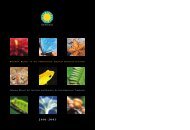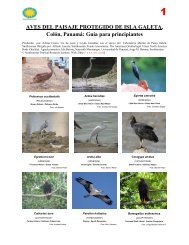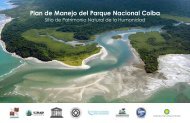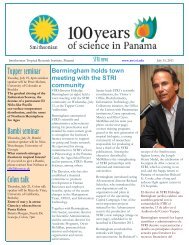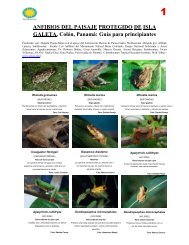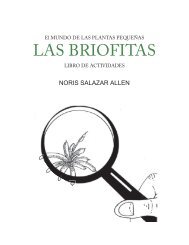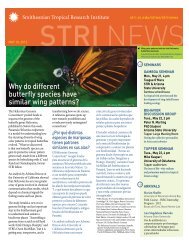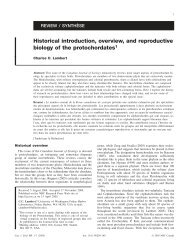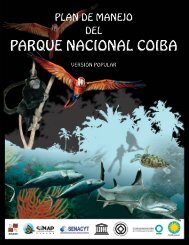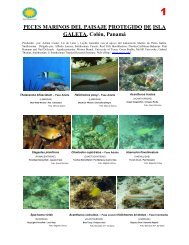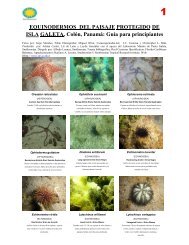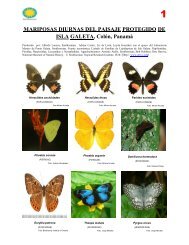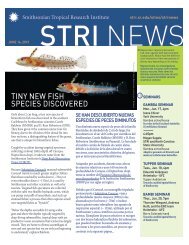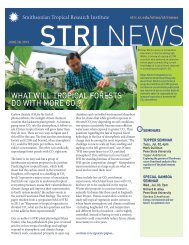Download - Smithsonian Tropical Research Institute - Smithsonian ...
Download - Smithsonian Tropical Research Institute - Smithsonian ...
Download - Smithsonian Tropical Research Institute - Smithsonian ...
You also want an ePaper? Increase the reach of your titles
YUMPU automatically turns print PDFs into web optimized ePapers that Google loves.
Vol. XXXIX: Supplement THE FESTIVUS Page 9<br />
tive of this land-based Expedition from December 2004<br />
to April 2005 was to explore and observe the land and<br />
marine flora and fauna and to study the lagoon and<br />
environment of the island (Charpy, L., [editor], in prep.<br />
Clipperton: environnement et biodiversité d’un<br />
microcosme océanique).<br />
The participants and provisions were shuttled 1,230<br />
km to and from Acapulco, México to Clipperton by the<br />
motor schooner Rara Avis on a revolving schedule every<br />
three weeks (Appendix 4). Land-based accommodations<br />
were set up, and during the rotations, scientists lived<br />
and worked on and from land. The Island was<br />
temporarily transformed into a biological laboratory and<br />
Figure 17. Author working up material in temporary wet lab, 2005.<br />
Photo: S. Hourdez.<br />
offered excellent working facilities (Figures 17, 18).<br />
I participated in the 13 January through 1 February<br />
2005 rotation researching and collecting marine and<br />
terrestrial mollusks with participants from the Muséum<br />
national d’Histoire naturelle, Paris, and other French<br />
institutions. We were diving to depths of 55 m, utilizing<br />
airlift pumps which generated an unprecedented volume<br />
of material. Techniques including limited algal shakings<br />
and coral brushings supplemented the samples which<br />
were described by Bouchet et al. (2002) from their work<br />
in New Caledonia. The three lagoon dives and some<br />
intertidal collecting added additional mollusk records,<br />
over 33 in all.<br />
Two years later Alicia Hermosillo (opisthobranchs),<br />
Pedro Medina Rosas (corals) and I were part of the<br />
“Expedition Île Clipperton 2007" aboard the M/V<br />
Nautilus Explorer (Appendix 4), which included three<br />
extra diving days at the Islas Revillagigedo. Six days<br />
from 14 to 20 April 2007 were spent at Clipperton.<br />
Very little intertidal work was done because of high<br />
Figure 18. Port Jaouen (diving operations) in front of landing site,<br />
2005. Photo: S. Hourdez.<br />
Figure 19. Pedro Medina Rosas, Alicia Hermosillo and the author on<br />
stern of the M/V Nautilus Explorer, 2007. Photo: R. Chávez Arce.<br />
breakers from the inclement weather which made landing<br />
both times on the island very hazardous. Among the<br />
three of us, a total of 18 dives with SCUBA were made<br />
in search of new mollusk records (Figure 19).<br />
A concerted effort was given to the opisthobranch<br />
fauna of the island which added four new records to the<br />
faunal list. For the first time at Clipperton, divers used



